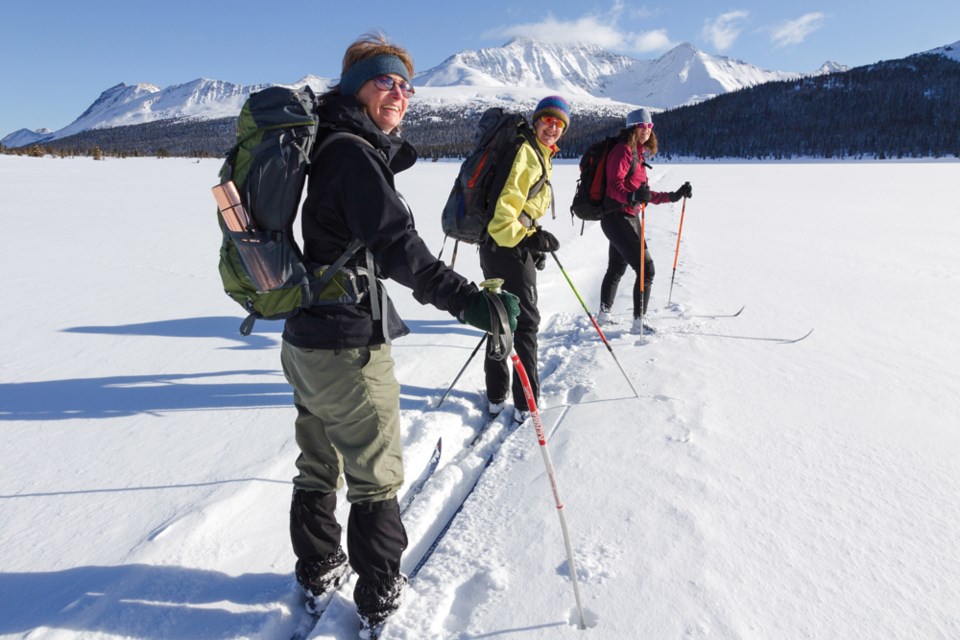
 At this time of year, Jasper National Park adds another “difficult” trail to the park’s broad range of cross-country skiing options.
At this time of year, Jasper National Park adds another “difficult” trail to the park’s broad range of cross-country skiing options.
On Monday, Feb. 16, Cavell Road will open for the public with track-setting in place for both classic and skate skiing. The winding road runs 11.6 km uphill to the Cavell Hostel and offers some spectacular views of the Astoria River Valley. The return trip, while following the same route, is a different experience. A quick, potentially hair-raising, descent back to the valley along a series of switchbacks is an exhilarating end to the day.
For experienced backcountry users looking for longer touring options, the Astoria and Portal Creek Trails will also be open. Whether touring for the day or overnight in one of the area’s unique backcountry accommodations, the scenery is truly awe-inspiring.
The Tonquin Valley is also home to Jasper’s Tonquin caribou herd. Watch for tracks or craters, areas where caribou have dug through the snow for lichen, and if you are lucky, you may even catch a glimpse of one of these amazing animals.
On March 1, the Maligne-Brazeau and A La Peche caribou ranges will also open for winter use. This includes the Bald Hills and all access points along the Skyline Trail, Poboktan Creek and the North Boundary Trail. It is time to get out and enjoy these backcountry areas with the longer days and generally warmer temperatures.
Touring in these areas does require a greater degree of knowledge, ability and self-reliance. Be sure to research the trip and trail conditions before you go, along with Jasper National Park’s other winter offers at parkscanada.gc.ca/jasper.
Access is delayed until mid-February in the Cavell and Tonquin Valley areas and until the end of February in the Maligne-Brazeau and North Boundary areas. These delayed access measures help to address one of the threats (facilitated predator access) to caribou in the park and better protect these herds.
The delay prevents packed trails from helping wolves reach important winter caribou habitat at a time when deep snow often limits wolf access to these high mountain areas. These areas open later in the season, because by late winter, the snow naturally compacts and packed trails are less likely to offer wolves an unnatural advantage.
During the historic fur trade days when winter travel was more toil than recreation, travellers also took advantage of these late season snow conditions. In 1858, Dr. Hector with the Palliser Expedition wrote, “As late as 1853, there was communication at two seasons by this post [Jasper House] with the Columbia district. In March, when the snow had acquired a crust, the express, with letters and accounts, started from Edmonton by the route I had just followed, and continued on to the Boat Encampment, to which place, by the time they arrived, owing to the earlier spring on the west side of the mountain, the brigade of boats had ascended from Vancouver. The mail from the western department was then exchanged, and taken back to Edmonton, and thence to Norway House, along with the Jasper House furs.”
Parks Canada would like to thank Jasper’s winter recreationalists for supporting caribou conservation by respecting the seasonal closures. Once the areas open, biologists will be able to collect monitoring data, including wolf GPS radio collar data, to help determine what, if any, wolf activity there was during the delayed access period.
Parks Canada
Special to the Fitzhugh
